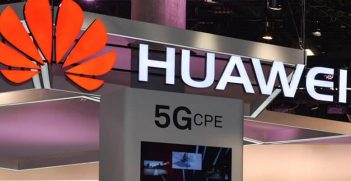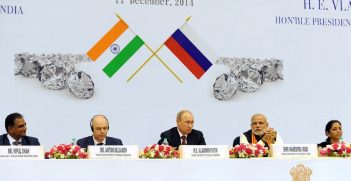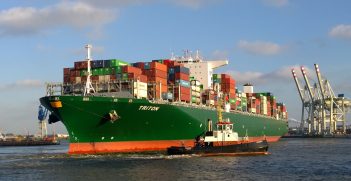The Asian Century: Building Upon a Long History of Asian Engagement (Part One)

How Australia engages with Asia has been a dominant question in 21st century foreign policy, mainly driven by issues of trade and immigration, but geopolitical strategy as well. It has led to several “White Papers” on the subject.
In 2012, then-Prime Minister Julia Gillard launched her famous but short-lived White Paper on the Asian Century. She wanted to open the economy to social democracy in the labour market.
As White Paper author Ken Henry put it:
“Julia Gillard was looking for a positive economic narrative that tied together a positive labour market story with an open economy to show that you could have a high skill high wages Australian labour market in the Asian in the Asian century. Gillard was looking for a positive narrative as opposed to the ‘Two-speed economy’ and alleged need to cut wages because the real exchange rate is making Australia is uncompetitive. This sort of drivel was being put about by Warwick McKibbin, Ross Garnaut, and others at the time. Julia Gillard wanted to say: ‘Today our strength doesn’t defend our social model – it relies on our social model.’ Gillard got support from various progressive business leaders in this point. Transport CEO, Lindsay Fox said we did well in Asia because of our high labour standards, occupational health and safety etc. not despite them and our relationships. That’s why Asia wants to partner with Australia.”
Amusingly, Gillard, told the story, “When I launched the paper at the Park Hyatt in Melbourne, a visiting Asian businessman said to me: ‘You know I only came here expecting lunch and now you’ve given me my own century!’”
At a forum at Parliament House, on a panel with Craig Emerson, who had initiated the White Paper, and ANZ CEO Mike Smith (ANZ was one of only 6 Australian private sector businesses who had actually made a submission to the White Paper Process), I made the comment that “The White Paper had finally buried White Australia,” sending a retired DFAT official into apoplexy. But later, when I went on Sky News to discuss the White Paper on the Asian Century and the compere said to me: “Thanks Tim for your analysis of the White Century,” I realised we had a long way to go.
But the Asian Century White Paper did draw some criticism. Former Prime Minister Kevin Rudd made the assessment that “The Asian Century report was established by the Gillard Government merely to show that Julia could ‘do Asia.’”
And from the Opposition benches, Julie Bishop said, “I think the White Paper does have a number of goals, it sets out a number of aspirations, and it makes some observations with which we would all agree.” But she also pointed out that “previous governments have understood the need to engage with Asia. Certainly, going back to the 50s, the Menzies Government got it immediately after the war that it needed to more deeply engage with Asia. That’s why the original Colombo Plan was announced in 1951, and that’s why trade treaties were with Japan were entered into in the 1950s.”
Then, in 2017, Foreign Minister Julie Bishop brought down her own White Paper on Foreign Policy, which talked about “a stable and prosperous Indo-Pacific.” She pointedly used the term “Indo-Pacific” instead of “Asia Pacific” to emphasise ties with India and Indonesia, as well as the well-established partnerships with Japan, South Korea, China, and ASEAN.
Whether Australia talks about the “Asia Pacific” or “Indo-Pacific” or the “Asian century,” it is clear that economic engagement with its neighbours in the “Near North” (rather that the quaint Anglo-American term, “The far East”) is the cornerstone of the nation’s economic potential. But this was not always the case, as much of our past attitudes to Asia were based on fear, shaping our defence and immigration policies. Our future is clearly about opportunity.
Trade has dominated the Asian engagement story in recent years, but it does have a long history. In fact, the first Australian traders with Asia were the Indigenous people of Arnhem Land who met fishermen from Makassar (now part of Sulawesi in modern Indonesia) in the 17th century to trade Trepang (sea cucumber, thought to be an aphrodisiac). Trade saved the convict colony of New South Wales in the 18th century from economic ruin, and in the 19th century, Chinese migrants to the Gold Rush helped develop Australia’s retail sector. Many took the concepts with them back to the major urban centres of China.
And there were further forays of trade into Asia. The colonies (now states) tried a few trade missions in the later 19th century. After Federation in 1901, Australia set up a Trade Commissioner in Shanghai in the 1920s, in Tokyo in the 1930s, despite objections from the British Foreign Office, and even in Batavia (now Jakarta) in the Dutch East Indies (Indonesia). But war, depression, and war again put a stop to this Asian engagement (British interests tried to curb Australia’s trade with Japan in the 1930s, for instance) and the Ottawa Agreement of 1932 cemented Imperial trade preferences within the Commonwealth (British Empire), excluding those outside “the pink bits on the map.”
But it was really the post-World War Two period in the 20th century that saw Australia’s trade relations with Asia accelerate. And both sides of politics have made their own contributions at different times.
This will be examined in the second part of this article, due to be published next week.
Tim Harcourt is the J.W. Nevile Fellow in Economics at UNSW, Sydney and host of The Airport Economist TV show and The Airport Economist Podcast.
This is part one of a two-part article on Australia and the Asian Century.
This article is published under a Creative Commons Licence and may be republished with attribution.





